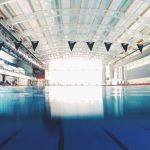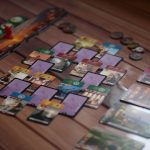Download links
How to install Mastering the Art of Parkour with taya777 APK?
1. Tap the downloaded Mastering the Art of Parkour with taya777 APK file.
2. Touch install.
3. Follow the steps on the screen.
Description
Parkour, often described as the art of movement, is a discipline that emphasizes fluidity, efficiency, and creativity in navigating obstacles. Originating in France in the late 20th century, parkour has evolved from a training method for military personnel into a global phenomenon embraced by individuals of all ages and backgrounds. At its core, parkour is about overcoming physical barriers in one’s environment, whether they be walls, railings, or gaps between buildings.
Practitioners, known as traceurs (male) or traceuses (female), utilize their bodies to vault, climb, and leap through urban landscapes, transforming everyday settings into playgrounds of movement. The philosophy behind parkour extends beyond mere physicality; it embodies a mindset of resilience and adaptability. Traceurs often emphasize the importance of understanding one’s surroundings and developing a personal connection to the environment.
This connection fosters a sense of freedom and empowerment, as practitioners learn to view obstacles not as hindrances but as opportunities for creative expression. The practice encourages individuals to push their limits, both physically and mentally, cultivating a spirit of perseverance that can translate into various aspects of life.
Key Takeaways
- Parkour is a physical discipline that involves moving through urban environments using only the human body and the surroundings to propel oneself.
- Developing strength and agility through regular training, including bodyweight exercises and plyometric movements, is essential for success in parkour.
- Fundamental parkour techniques include the precision jump, the wall run, the cat leap, and the tic tac, which are used to navigate obstacles and terrain.
- Overcoming mental barriers in parkour involves building confidence, focus, and adaptability, as well as learning to manage fear and uncertainty.
- Safety measures and precautions in parkour include proper warm-up and stretching, using appropriate footwear, and always assessing and mitigating risks before attempting any movement.
Developing Strength and Agility for Parkour
To excel in parkour, developing strength and agility is paramount. The discipline demands a unique combination of physical attributes, including explosive power, balance, and coordination. Strength training is essential for building the muscle groups most utilized in parkour movements.
Exercises such as squats, lunges, and push-ups form the foundation of a traceur’s training regimen. These exercises not only enhance overall strength but also target specific muscle groups critical for jumping, climbing, and landing safely. In addition to strength, agility plays a crucial role in parkour performance.
Agility refers to the ability to move quickly and change direction with ease. Incorporating agility drills into training routines can significantly improve a practitioner’s performance. Activities such as ladder drills, cone sprints, and plyometric exercises help develop quick footwork and explosive movements.
Furthermore, practicing dynamic movements like vaults and rolls can enhance coordination and body awareness, allowing traceurs to navigate obstacles more fluidly.
Learning Fundamental Parkour Techniques

Mastering fundamental parkour techniques is essential for anyone looking to progress in the discipline. These foundational skills serve as building blocks for more advanced maneuvers and are critical for ensuring safety during practice. One of the most basic yet vital techniques is the roll, which allows practitioners to dissipate the impact of a fall or jump safely.
Learning to roll correctly involves tucking the chin to the chest, rolling diagonally across the back, and using the arms to guide the body through the motion. Another fundamental technique is the precision jump, which requires traceurs to leap from one surface to another with accuracy. This skill emphasizes control and body awareness, as practitioners must gauge distances and adjust their takeoff accordingly.
Practicing precision jumps on various surfaces can help build confidence and improve landing techniques. Additionally, mastering vaults—such as the speed vault or lazy vault—enables traceurs to navigate obstacles efficiently while maintaining momentum. Each of these techniques lays the groundwork for more complex movements and enhances overall performance in parkour.
Overcoming Mental Barriers in Parkour
| Barriers | Challenges | Strategies |
|---|---|---|
| Fear of Heights | Difficulty in jumping from high platforms | Gradual exposure, visualization, and controlled breathing |
| Lack of Confidence | Feeling unsure about executing difficult moves | Progressive training, positive self-talk, and support from peers |
| Mental Blocks | Struggling to overcome mental obstacles | Mindfulness techniques, setting small goals, and seeking professional help if needed |
While physical prowess is crucial in parkour, mental fortitude is equally important. Many practitioners encounter mental barriers that can hinder their progress. Fear of injury or failure often looms large in the minds of beginners, making it challenging to attempt new moves or push beyond comfort zones.
Overcoming these mental obstacles requires a combination of self-awareness and gradual exposure to challenging situations. Practitioners are encouraged to start small, gradually increasing the difficulty of their challenges as they build confidence. Visualization techniques can also be beneficial in overcoming mental barriers.
By mentally rehearsing movements before attempting them physically, traceurs can create a sense of familiarity that reduces anxiety. Additionally, surrounding oneself with supportive peers can foster a positive environment that encourages risk-taking and experimentation. Sharing experiences with fellow practitioners can provide valuable insights and motivation, helping individuals confront their fears head-on.
Safety Measures and Precautions in Parkour
Safety is paramount in parkour practice, as the discipline inherently involves risk due to its dynamic nature. Practitioners must prioritize safety measures to minimize the likelihood of injury while training. One of the most effective ways to ensure safety is by choosing appropriate training environments.
Beginners should start in controlled settings with soft surfaces—such as grass or padded mats—before progressing to harder surfaces like concrete or asphalt. This gradual transition allows practitioners to develop their skills while reducing the risk of injury. Proper warm-up routines are also essential for preparing the body for physical activity.
Dynamic stretching and mobility exercises can help increase blood flow to muscles and improve flexibility, reducing the likelihood of strains or sprains during practice. Additionally, wearing appropriate footwear can enhance grip and support during movements. Traceurs should opt for shoes designed for agility and impact absorption to protect their feet during jumps and landings.
Finally, understanding one’s limits is crucial; pushing too hard too quickly can lead to accidents that could have been avoided with patience and caution.
Taking Parkour to the Next Level with Advanced Moves

Advanced Techniques for the Fearless
Once practitioners have mastered fundamental techniques and built a solid foundation of strength and agility, they may seek to elevate their skills by exploring advanced parkour moves. These maneuvers often require a higher level of technical proficiency and confidence but can be incredibly rewarding when executed successfully. One such advanced move is the Kong vault, which involves launching oneself over an obstacle while tucking the knees towards the chest and landing on both feet simultaneously.
Pushing the Limits of Physicality and Mental Clarity
This technique demands precise timing and coordination but opens up new possibilities for navigating complex environments. Another advanced technique is the wall flip, which combines acrobatics with parkour principles. This move requires practitioners to run towards a wall at an angle, use their hands to push off while flipping backward, and land safely on their feet. Mastering this move necessitates not only physical strength but also mental clarity and spatial awareness.
Unleashing Creativity and Expression
As traceurs progress into more advanced territory, they may also explore creative combinations of movements—linking various techniques together seamlessly to create fluid sequences that showcase their skills. This level of creativity not only enhances individual expression but also contributes to the overall evolution of parkour as an art form. By continuously challenging themselves with new moves and combinations, practitioners can keep their training fresh and exciting while pushing the boundaries of what is possible within the discipline.
If you’re a fan of parkour, you may also be interested in checking out Taya777’s article on unleashing your gaming skills with online gaming. The article explores how online gaming can help improve your reflexes, coordination, and strategic thinking – all skills that are also important in parkour. You can read the full article here. For more exciting content on parkour and other topics, visit taya777.lol.
FAQs
What is parkour?
Parkour is a physical discipline that involves moving through an environment in a creative and efficient way. It often includes running, jumping, climbing, and other movements to overcome obstacles.
Where did parkour originate?
Parkour originated in France in the 1980s, developed by David Belle and his group of friends. It was influenced by military obstacle course training and various martial arts.
What are the benefits of practicing parkour?
Practicing parkour can improve strength, agility, balance, and coordination. It also promotes creativity, problem-solving skills, and mental focus.
Is parkour dangerous?
Like any physical activity, parkour can be dangerous if not practiced with proper technique and safety precautions. It is important to receive proper training and start with the basics before attempting more advanced movements.
Can anyone do parkour?
Parkour can be practiced by people of all ages and fitness levels, but it is important to start with proper training and progress at a pace that is comfortable for the individual. It is always recommended to consult with a healthcare professional before starting any new physical activity.





